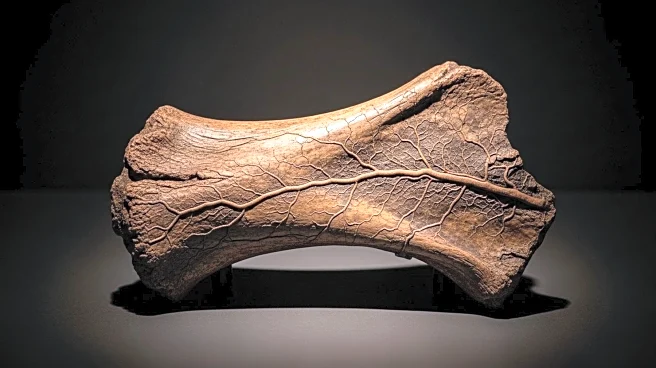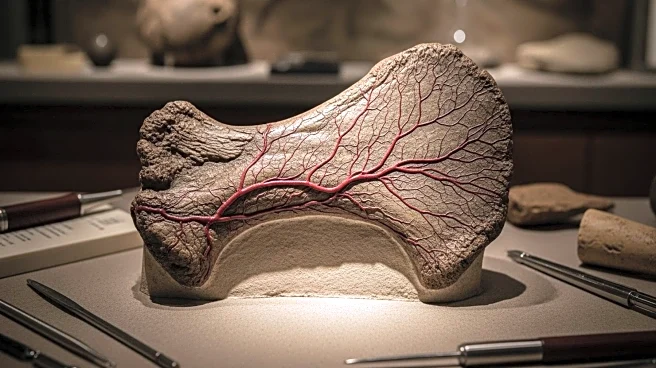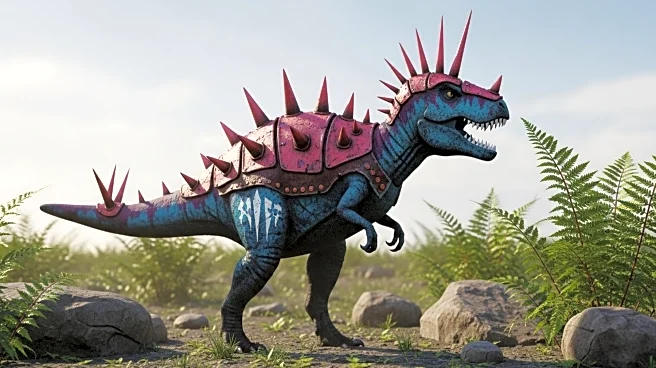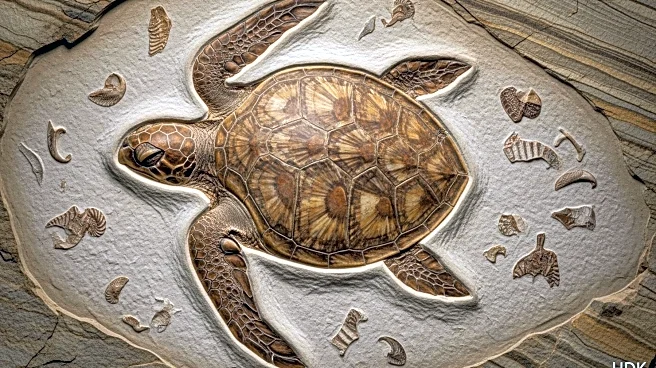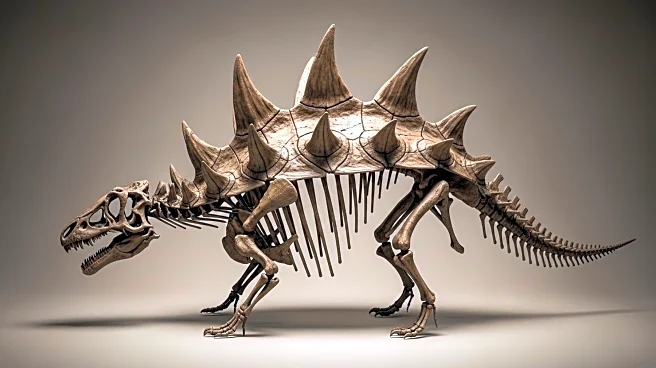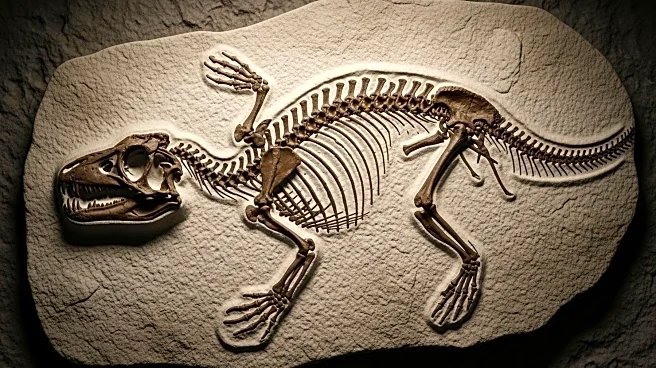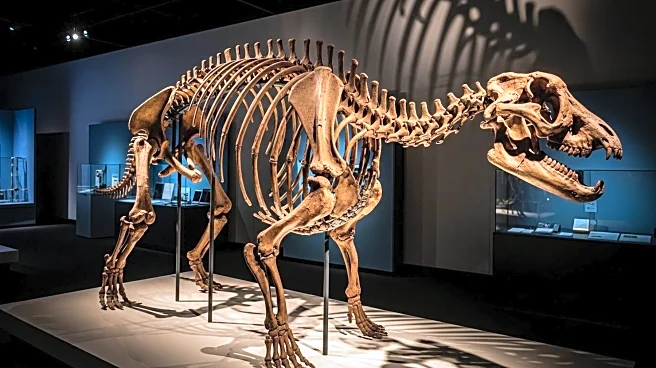What's Happening?
Researchers have discovered preserved blood vessels in the bones of a Tyrannosaurus rex specimen known as Scotty, housed at the Royal Saskatchewan Museum in Canada. This finding was made using high-powered x-rays and advanced 3D modeling techniques, revealing mineralized tissues within the fossil. Scotty is the largest and one of the most complete T. rex skeletons ever found. The discovery of these blood vessels provides a rare glimpse into the soft tissue structures of dinosaurs, which are typically not preserved in fossils. The research team, led by Jerit Leo Mitchell, utilized synchrotron light to examine the microstructures of the bone without causing damage, overcoming the challenges posed by the dense fossilized material. The vessels were found to be preserved as iron-rich mineralized casts, offering insights into the dinosaur's biology and healing processes.
Why It's Important?
The discovery of blood vessels in T. rex bones is significant as it enhances the understanding of dinosaur biology, particularly their healing processes and physiology. This finding could revolutionize paleontology by providing new methods to study soft tissues in fossils, which are crucial for understanding the life and appearance of ancient species. The research may also guide future fossil explorations, helping scientists target bones with signs of injury or disease to increase the chances of finding preserved soft tissues. This cross-disciplinary approach, combining physics and paleontology, opens new avenues for reconstructing the lives of dinosaurs and understanding their evolutionary connections to modern species like birds.
What's Next?
Future research may focus on comparing the blood vessel structures found in Scotty to those in other dinosaur species and modern relatives, such as birds. This could provide evolutionary insights and help scientists understand how these ancient creatures healed and survived injuries. Additionally, the techniques used in this study could be applied to other fossils, potentially leading to more discoveries of preserved soft tissues. The findings may also influence the strategies used in fossil excavation and analysis, encouraging a focus on bones with visible signs of trauma or disease.
Beyond the Headlines
The discovery raises ethical and scientific questions about the preservation and study of fossils. It highlights the importance of using non-destructive techniques in paleontological research to protect valuable specimens. The study also underscores the potential of interdisciplinary research, combining advanced technology with traditional paleontology to uncover new information about ancient life.
